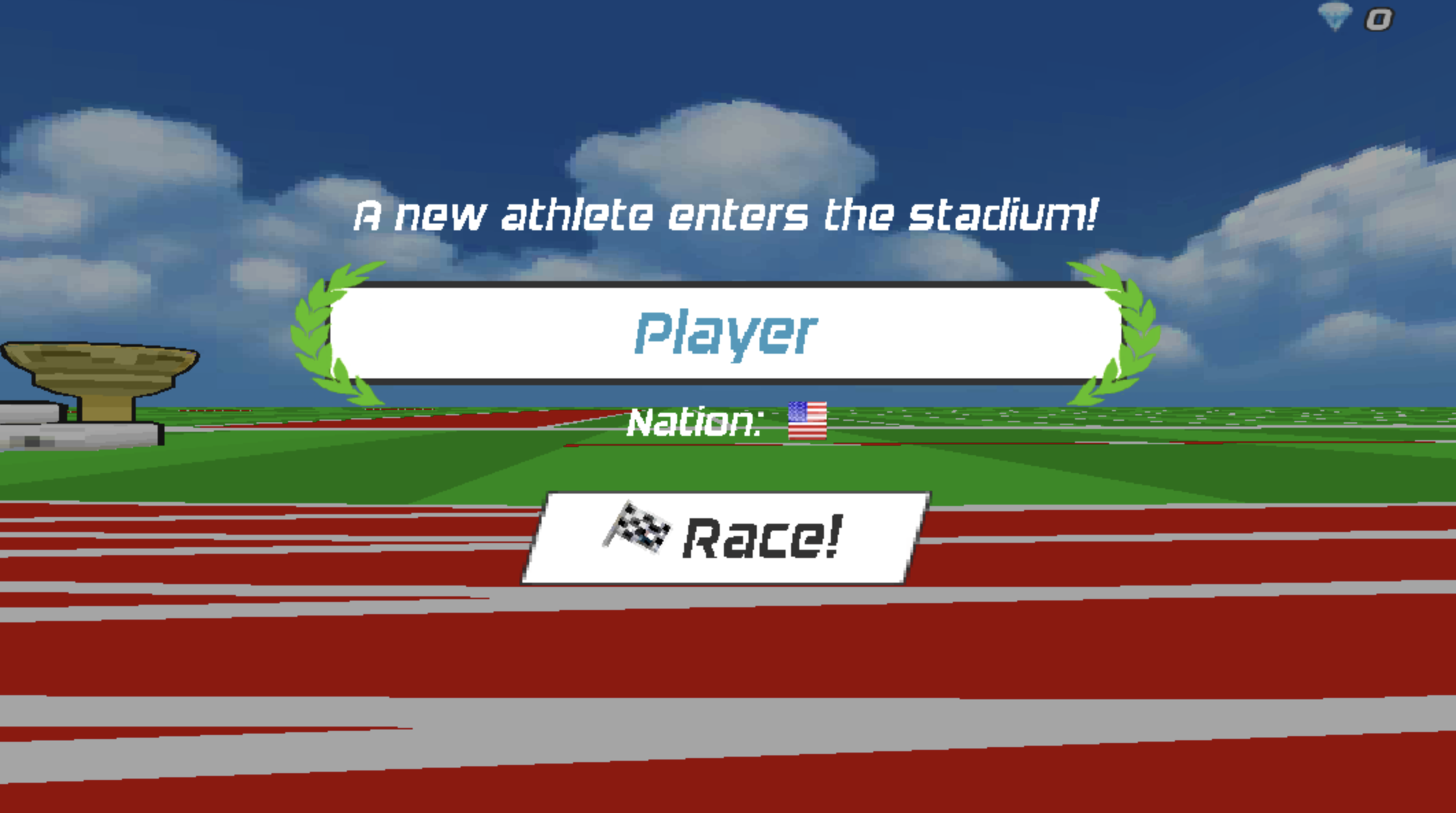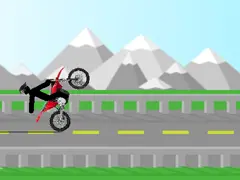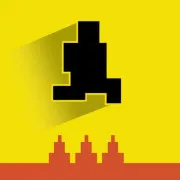Feel the beat, follow the waveform
Keep exploring
Keep the momentum going with more arena racers, action trials, and puzzle standouts.

Play Rumble Rush in Your Browser

Play Level Devil 4 Now

Run, Hurdle, and Relay in Your Browser

Assemble Chiikawa’s friends before the tiles fade

Sprint, build, and battle in one flexible sandbox

Hold the perfect wheelie, stack stunts, ride forever

Play Devil Dash Online

Every routine hides a judgment

Fireboy and Watergirl: Ice Temple

Play Soflo Wheelie Life in Your Browser
Surf the waveform, nail the rhythm
Ride a laser line through pulsing corridors
Geometry Dash Wave focuses on the purest form of input mastery: tap, release, and hold with surgical timing. In this distilled mode, your ship pivots instantly around a tight angle, climbing when pressed and diving when released. The minimal rule set hides surprising depth, and Geometry Dash Wave makes that depth feel tangible by syncing hazards to driving electronic tracks that pull you forward. Rather than juggling multiple mechanics, you’re tasked with turning rhythm into motion, and motion into victory.
As you begin, Geometry Dash Wave invites you to breathe in measure with the music. The corridors look unforgiving, yet the pattern language is readable. Short pulses are altitude nudges; longer presses are steep climbs; micro-feathers are the lifeline that carries your ship across razor-thin passages. The game creates a feedback loop where your ears inform your fingers, and your fingers carve a path that feels like handwriting on light.
Instant control that rewards micro-input skill
What separates Geometry Dash Wave from slower platform templates is acceleration on demand. There is no inertia to fight, no sluggish turns, only immediate response. That immediacy encourages you to think in frames rather than seconds. A two-beat climb followed by a half-beat drop can clear a pattern that looks impossible at first glance. Because the mode is so responsive, you learn to trust small corrections. Tiny pulses tap the hull away from spike tips; a controlled release floats you through micro-gaps. Each corridor becomes a sentence, and your inputs are the punctuation marks that make it readable.
In practice mode, Geometry Dash Wave turns walls into teachers. Checkpoints let you reattempt the same motif until the rhythm lands in your muscle memory. You’ll notice how the beat suggests the height of each rise, and how the spacing of obstacles implies the length of each hold. Over time, your hands internalize these cues. That’s when the ship stops feeling like a vehicle and starts feeling like an instrument.
Audio patterns that guide visual decisions
The soundtrack in Geometry Dash Wave is more than a backdrop. Percussion accents often align with hazard reveals, and sustained synth lines mirror long slopes that demand steady presses. Listening becomes a strategy: count the downbeats to prepare for a sudden vertical cut, or ride a hi-hat roll with featherlight pulses to skim a ceiling. This audio-first approach means you can preempt traps. Anticipation, not reaction, is the secret to consistency.
At first, you’ll miss beats and overcorrect. That’s normal. Geometry Dash Wave is forgiving in the sense that it always tells you what went wrong. If you clipped an edge, you likely held a fraction too long; if you stalled in a tunnel, the release came a hair early. Because feedback is literal—crash or clear—you can iterate quickly. The next attempt is only a restart away, and the next insight is only a bar of music ahead.
Why the wave is a masterclass in precision
With many action modes, improvement feels fuzzy. In Geometry Dash Wave, improvement is unmistakable. You can measure progress by how many micro-gaps you chain without panic, by how calmly you float through crowded zigzags, and by how often your first read turns into a clean pass. The ship’s angle makes every mistake legible, and legibility makes practice efficient. You are never guessing whether you got better; you are proving it run by run.
Another advantage is transfer. Skills learned in Geometry Dash Wave carry directly into demanding segments across the broader series. CPS control, rhythm mapping, and micro-pulse discipline all translate to higher clear rates in extended levels. The mode is a compact gym where you isolate critical muscles, build stamina, and then return stronger to full songs.
A structured plan to lock in consistency
Start with a five-minute warm-up: low-intensity tunnels where you focus on even breathing, light grip, and beat counting. Then move to medium corridors and practice alternating long and short holds. Mark any section that causes repeated crashes and use checkpoints to drill it for two minutes. Next, attempt a continuous run to pressure-test your upgrades. Finish with a cooldown pass at an easier track to reinforce calm inputs. This small routine, repeated daily in Geometry Dash Wave, compounds faster than marathon sessions that end in frustration.
When a formation won’t click, break it down. In Geometry Dash Wave, most hazards are combinations of a few primitives: staircase climbs, saw-tooth descents, and slalom zigzags. Identify which primitive dominates the section, set your mental metronome to that pulse, and commit to a single correction strategy—either tiny taps or slow, steady holds. Mixing styles mid-corridor is the main source of inconsistency.
Mindset, ergonomics, and flow
Your hands can only do what your posture permits. For long sessions in Geometry Dash Wave, relax your shoulders, rest your forearm, and keep your wrist neutral. A lighter grip improves tap speed and reduces over-holds. Consider binding keys that feel natural for your fingers. If you’re on a touchpad or screen, focus on rhythm clarity over brute speed; precise timing beats frantic spam.
The best runs happen when you stop negotiating with the corridor and start narrating it. In Geometry Dash Wave, try assigning silent words to patterns: “step-step-glide,” “rise-hold-drop,” “tap-tap-feather.” These cues convert visuals into timing scripts, making execution more reliable. If tension builds, pause, breathe for four counts, and restart with intention. There’s always another attempt, and the game rewards patience.
Troubleshooting common plateaus
If you keep clipping ceilings, your default press is too heavy. In Geometry Dash Wave, practice hovering beneath a flat roof using micro pulses that barely move the hull. If you slide into floor spikes after long climbs, your release is too abrupt; try easing off in a short taper rather than dropping instantly. If zigzags chew you up, slow the pattern in your head and commit to a single beat pattern—left tap, right tap, repeat—so that your ship traces clean diagonals.
Visual clutter can also cause panic. Reduce screen distractions and let the music lead. Many players clear their first tough corridor in Geometry Dash Wave the moment they prioritize tempo over ornamentation. The moment you hear the turn coming, your hands will already be in position to make it.
From practice to performance
As your control sharpens, stretch your goals. Attempt longer sequences without checkpoints, aim for clean no-scrape lines, and then push speed. What feels impossible today becomes tomorrow’s warm-up if you keep the loop tight: attempt, diagnose, adjust, repeat. Because Geometry Dash Wave compresses the distance between tries, you collect more data in fewer minutes, accelerating the feedback cycle that drives mastery.
Eventually, the ship becomes an extension of your rhythm sense. In that state, Geometry Dash Wave turns from a challenge into a canvas. You paint with angles, you phrase with holds, and you glide through hazards you once feared. The corridor is still lethal, but it is also legible, and legibility breeds confidence.
A closing push toward flow
If you want a final nudge, record a short run and watch your inputs. In Geometry Dash Wave, the difference between a crash and a clear is often a five-frame hesitation or a press that lingers a hair too long. Seeing the moment of doubt will help you remove it. Then return to the track, trust the beat, and let the ship trace the waveform you already hear.
Keep your sessions short, your focus sharp, and your rhythm steady. With each pass, Geometry Dash Wave turns frantic reaction into composed motion. That transformation—noise into pattern, fear into tempo—is the real reward. When the corridor finally unspools and the exit flashes, you’ll understand what the mode has been teaching all along: mastery is timing, timing is music, and music is how you fly.
Feel the beat, follow the waveform is ready to play
Master ultra-precise wave controls, ride razor angles to EDM beats, and drill checkpoints to build CPS, consistency, and confidence for tougher Geometry Dash levels.
Share Feel the beat, follow the waveform
Spread the word, invite friends, or bookmark this page to revisit the story whenever you need it.